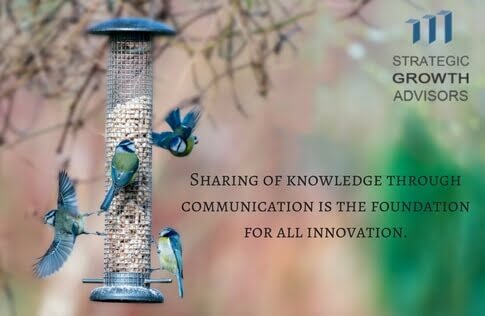Benefits of Hiring a Marketing Agency (And 7 Things to Look for in One)
Staying on top of your company's digital marketing can be challenging. From managing your social media presence to optimizing your search engine rankings,...
 The business buzzword for the past couple of years has been innovation. Many articles have been written about this topic in academic and business trade journals, and almost every major MBA program offers a class with an innovation focus. Yes, even the University of Arizona, Eller MBA program where I have taught as an adjunct lecturer offers a course titled, “Strategic Innovation”.
The business buzzword for the past couple of years has been innovation. Many articles have been written about this topic in academic and business trade journals, and almost every major MBA program offers a class with an innovation focus. Yes, even the University of Arizona, Eller MBA program where I have taught as an adjunct lecturer offers a course titled, “Strategic Innovation”.
If we define Innovation as, “a unique solution to a problem”, then almost any new solution to a problem can be classified as an innovation. Though, in business, an innovation only has value if it creates an advantage that competitors can’t easily or quickly duplicate.
So, why are some businesses considered innovative while others are not? First, we must acknowledge that not every business is trying to solve difficult problems. Many businesses are just “operating”. However, of those businesses that are attempting to innovate, only a few have figured out what the Blue Tit knows – the sharing of knowledge through communication is the foundation for all innovation.
Extract from: The Living Company by Arie de Geus, Nicholas Brealey, 1999
The United Kingdom has a long-standing system of delivering milk in bottles to the door. At the beginning of the 20th century, these milk bottles had no top. Birds had easy access to the cream which settled in the top of the bottle. Two different species of British garden birds, the blue tits and red robins, learned to siphon up cream from the bottles and tap this new, rich food source.
This innovation, in itself, was already quite an achievement. But it also had an evolutionary effect. The cream was much richer than the usual food sources of these birds, and the two species underwent some adaptation of their digestive systems to cope with the unusual nutrients. This internal adaptation almost certainly took place through Darwinian selection.
Then, between the two world wars, the UK dairy distributors closed access to the food source by placing aluminum seals on their bottles.
By the early 1950s the entire blue tit population of the UK, about a million birds, had learned how to pierce the aluminum seals. Regaining access to this rich food source provided an important victory for the blue tit family as a whole; it gave them an advantage in the battle for survival. Conversely, the robins, as a family, never regained access to the cream. Occasionally, an individual robin learns how to pierce the seals of the milk bottle. But the knowledge never passes to the rest of the species.
In short, the blue tits went through an extraordinarily successful institutional learning process. The robins failed, even though individual robins had been as innovative as individual blue tits. Moreover, the difference could not be attributed to their ability to communicate. As songbirds, both the blue tits and the robins had the same wide range of means of communication: color, behavior, movements, and song. The explanation could be found only in the social propagation process: the way blue tits spread their skill from one individual to members of the species as a whole.
In spring, the blue tits live in couples until they have reared their young. By early summer, when the young blue tits are flying and feeding on their own, we see birds moving from garden to garden in flocks of eight to ten individuals. These flocks seem to remain intact, moving together around the countryside, and the period of mobility lasts for two to three months.
Robins, by contrast, are territorial birds. A male robin will not allow another male to enter its territory. When threatened, the robin sends a warning, as if to say, “Keep the hell out of here.” In general, red robins tend to communicate with each other in an antagonistic manner, with fixed boundaries that they do not cross.
Birds that flock, seem to learn faster. They increase their chances to survive and evolve more quickly.





We don’t just want to build you a custom Growth Strategy, we want to give you resources for the everyday. Read our blog for fresh ideas and insights on business growth and development.